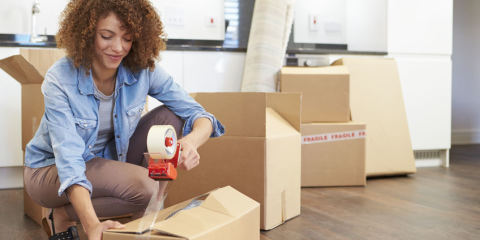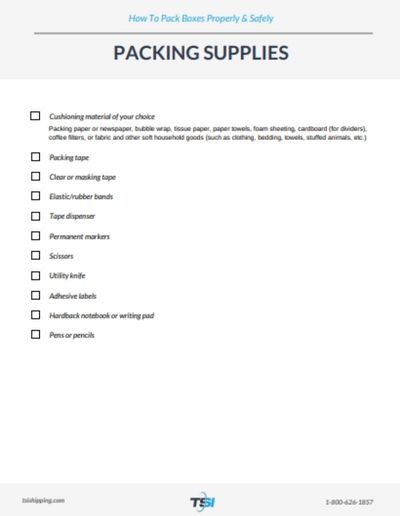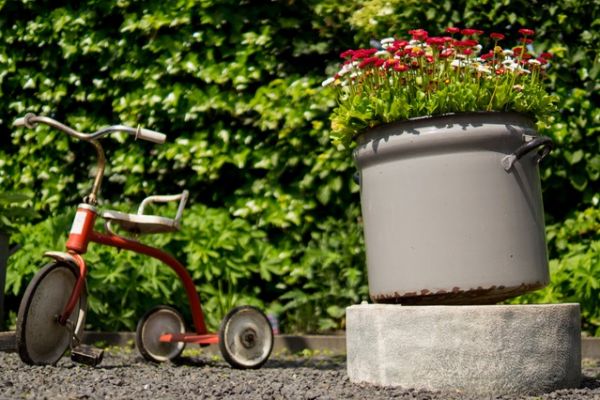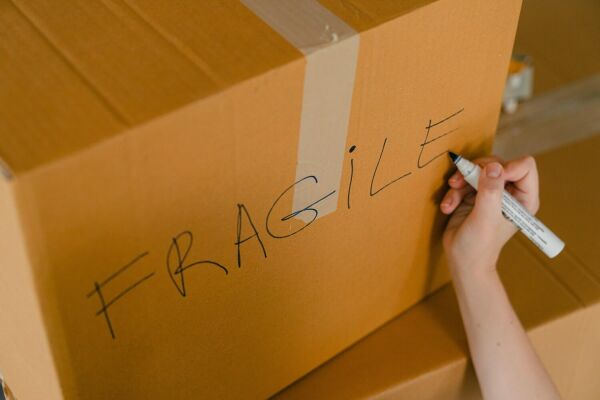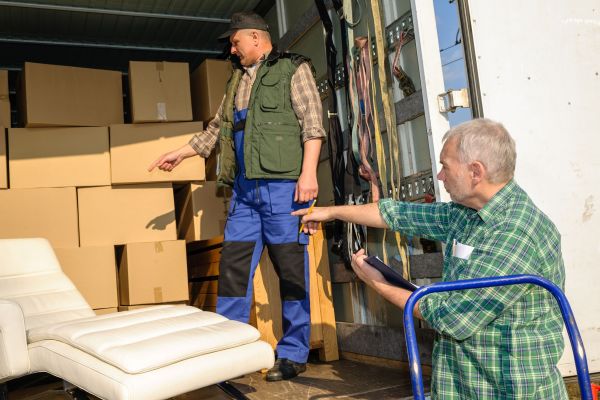There’s more to packing for a move than simply tossing your stuff into boxes and hoping for the best. After all, these are your treasured belongings and prized possessions. Using proper packing materials and loading your boxes safely can make all the difference when it comes to whether or not an item makes it to your new home unscathed.
Not even the best movers can save your belongings if they haven’t been packed properly. Here’s how to ensure your moving boxes are well-packed:
1. Preparation
Before you start packing everything up, you’ll need to gather your stuff and get organized. Make a list of every item in your home, organized by room. This will help you keep track of your items when they’re all boxed up and make it easier to plan your packing, including how many boxes you’ll need.
Once you have a better idea of what you’ll need, it’s time to pick up your supplies. This is an easy spot to save money during a move, but don’t scrimp too much—you want to make sure you select good quality supplies that will hold up during the rigors of moving.
Boxes
When it comes to ensuring the safety of your belongings, make sure you select the best box for the job:
- New boxes or, at the very least, used ones in extremely good condition—meaning no wear and tear that will hurt the integrity of the box—are the most likely to keep your items safe. Keep in mind that some moving companies will refuse to move boxes that are visibly damaged, and may even charge you for the cost of repacking them
- Select a range of box sizes and thicknesses to accommodate your belongings.
- Get a few more boxes than you think you’ll need, because even if you organize everything into piles and estimate, you can’t be 100% sure how many boxes you’ll really need until you start packing. Having to stop packing part way through to pick up more boxes can really slow down the process and ruin any rhythm you may have going. It also provides you with a quick way to correct over-packing a box and making it too heavy.
Other Supplies
In addition to boxes, you will need the following supplies to properly protect and prep your belongings:
- Cushioning material of your choice, such as packing paper or newspaper (an industry favorite), bubble wrap, tissue paper, paper towels, foam sheeting, fardboard (for dividers), coffee filters, fabric and other soft household goods (for example: clothing, bedding, towels, stuffed animals, etc)
- Packing tape
- Clear or masking tape
- Elastic/rubber bands
- Tape dispenser
- Permanent markers
- Scissors
- Utility knife
- Adhesive labels
- Hardback notebook or writing pad
- Pens or pencils
Download a free printable checklist:
Make sure you also pick up pens, markers, labels, and tape in multiple colors. This will help with the organizing process, and you can color-code boxes for easy unloading and unpacking.
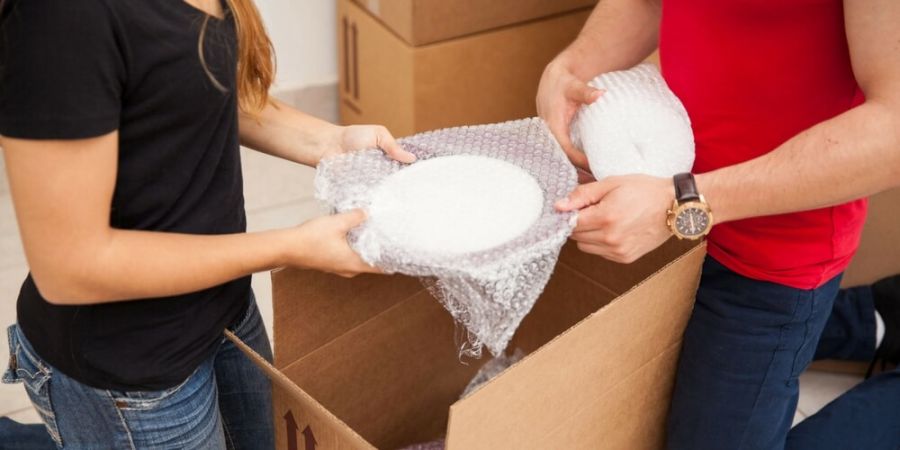
2. Wrapping
Properly wrapping your items before you place them in the box can help to protect them from scratches, dents, and other types of damage. Prepare a wrapping station in whatever room you are working in by setting up your supplies on a flat surface at a comfortable working height. To ensure the safety of your stuff, try these tips:
- Wrap all glassware and plates in two or three sheets of paper or a sheet of bubble wrap, then secure with tape. Extra paper or bubble wrap can be crumpled inside of hollow items for additional protection.
- Fragile and delicate items should be wrapped in bubble wrap or tissue paper (or both) and packed carefully in an appropriately sized box with foam peanuts or shredded or crumpled paper as cushioning material. Make sure to mark the box appropriately.
- Keep in mind that the flat side of the bubble wrap should face away from the item you are wrapping. Put the bubbles directly against it to keep it cushioned and protected.
- Don’t put newsprint directly against white objects, as the ink can rub off. Save it for an outside layer or use it as cushioning material.
- Just because it isn’t likely to break doesn’t mean it can’t get damaged! Wrapping all of your belongings protects them from scratches and gouging, which can happen if box contents shift unexpectedly during transit.
- When wrapping items up, make sure you keep all of the parts together. If you have to disassemble an item to wrap it up, put any small, removable pieces like screws or bolts into a plastic bag, label it, and tape it securely onto the largest piece or to the inside of the box it will be placed in.
- Cover and cushion all edges, corners, and rims.
3. Packing Boxes for Shipping
Before you place items into a box, make sure it is sturdy and ready to receive items. Assemble the box with packing tape, ensuring that no items can slip out of any cracks, and begin loading it up.
- If you are opting to reuse old boxes, you can reinforce the bottom of the box with extra packing tape for additional security.
- Before you start adding items, place a layer of your chosen cushioning material on the bottom of the box.
- To keep your boxes easy to transport, try not to pack in more than you can easily lift. The best way to do this is to reserve your big boxes for light or large items and save small boxes for your heavier belongings, so you’re not tempted to fill it up and accidentally injure yourself trying to lift it.
- Layer items within the box, with the largest, heaviest items on the bottom, and fill in holes with additional cushioning material and dividers.
- Be careful not to over- or underload the box. It shouldn’t be so full that you can’t close it, but it does need to contain enough items and packing material that things won’t shift. You can always fill in empty spaces with extra cushioning materials.
- Be smart about what goes in each box—keeping items of similar shape, material, and fragility together increases the likelihood that they’ll survive the trip. While placing like-items together is a good idea, try not to mix up items from different rooms. This has the potential to make unpacking a nightmare.
- Place anything that contains a liquid inside of a sealed plastic bin or bag. Liquids leaking can undermine the integrity of multiple boxes stacked together and damage your belongings. It’s also important to remember that most moving companies will not transport hazardous materials such as fuel or paint thinner.
- To avoid additional trips out to the truck, place small boxes containing light items into a large box and place cushioning material in any space between them.
Fragile Belongings
Because of their delicate nature, fragile items require more consideration when wrapping and placing them in a box.
- Fragile items should be placed in smaller boxes where they are less likely to shift around, or specialty boxes that have cardboard separators, such as wine boxes.
- You should limit the number of fragile items put in a single box—you don’t want it to be too crowded or the cushioning won’t work as well.
- Add a generous layer of cushioning material to the bottom and top of the box, and carefully wrap delicate items in bubble wrap (highly breakable items, such as figurines, china, ceramics, etc.) or paper (fragile but less breakable items, such as picture frames).
- Avoid laying glass items like mirrors flat—they are more prone to breakage that way. Instead, stack them vertically. You can also tape an X over any glass or mirrors to limit damage if they do break in transit.
- Fill all empty spaces with cushioning material, including the inside of hollow items such as vases.
| NOTE: Do not use household textiles like towels to pack fragile items, they will not provide enough cushioning to keep these delicate pieces safe. |
4. Sealing It Up
If you haven’t already, fill in any visible holes and add another layer of cushioning material to the box. Unless the box needs to be inspected by your moving company, close the box and tape it shut tightly along the openings and seams with packing tape.
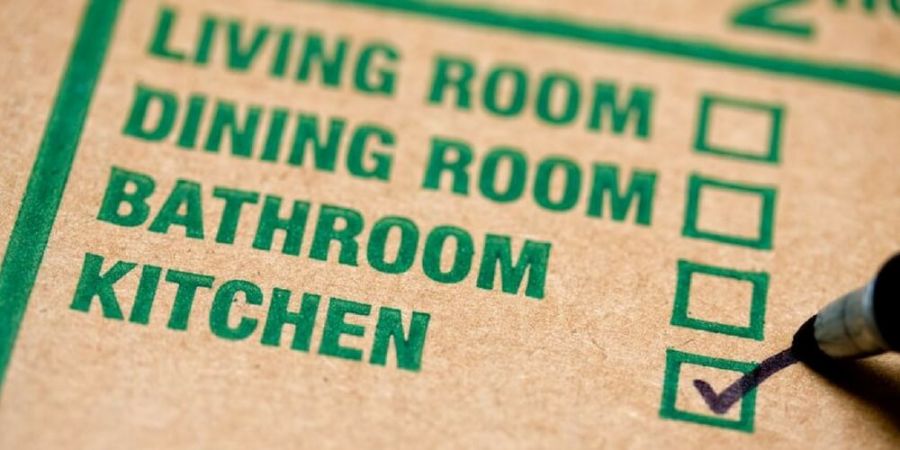
5. Labeling
Labeling is an important step that you shouldn’t overlook. Proper labeling will help you identify what boxes need to be handled carefully, and also assist with the unpacking process by making it easier to avoid the issue of misplaced boxes if you are using a moving company. With a large, easy-to-read marker, label the top and side of each box with:
- Destination address
- Room
- Box contents
- Your last name and invoice number
- Arrows to indicate which end should be up
- If necessary, mark the box with FRAGILE
- Other information you think is useful, such as any organizational system you have come up with, or a symbol to indicate which boxes should be unpacked first.
| PRO TIP: For easy unpacking, put up signs at your new home that coordinate with the names or numbers you’ve put on boxes. This way, you or your movers can quickly identify where things need to go and place boxes in the appropriate rooms. |
Perfectly Packed
Moving can be an emotional and stressful time, and the last thing you need when you’re getting settled in a new house is to discover that some of your beloved items have broken en route. Not only can this add to your financial burden, but some of these items are irreplaceable. Safely and properly packing your boxes is one of the most proactive things you can do to avoid such a disaster.
"How Do I Ship Large Boxes?"
Read our detailed guide to learn about shipping methods, special considerations, and get step-by-step packing instructions.
